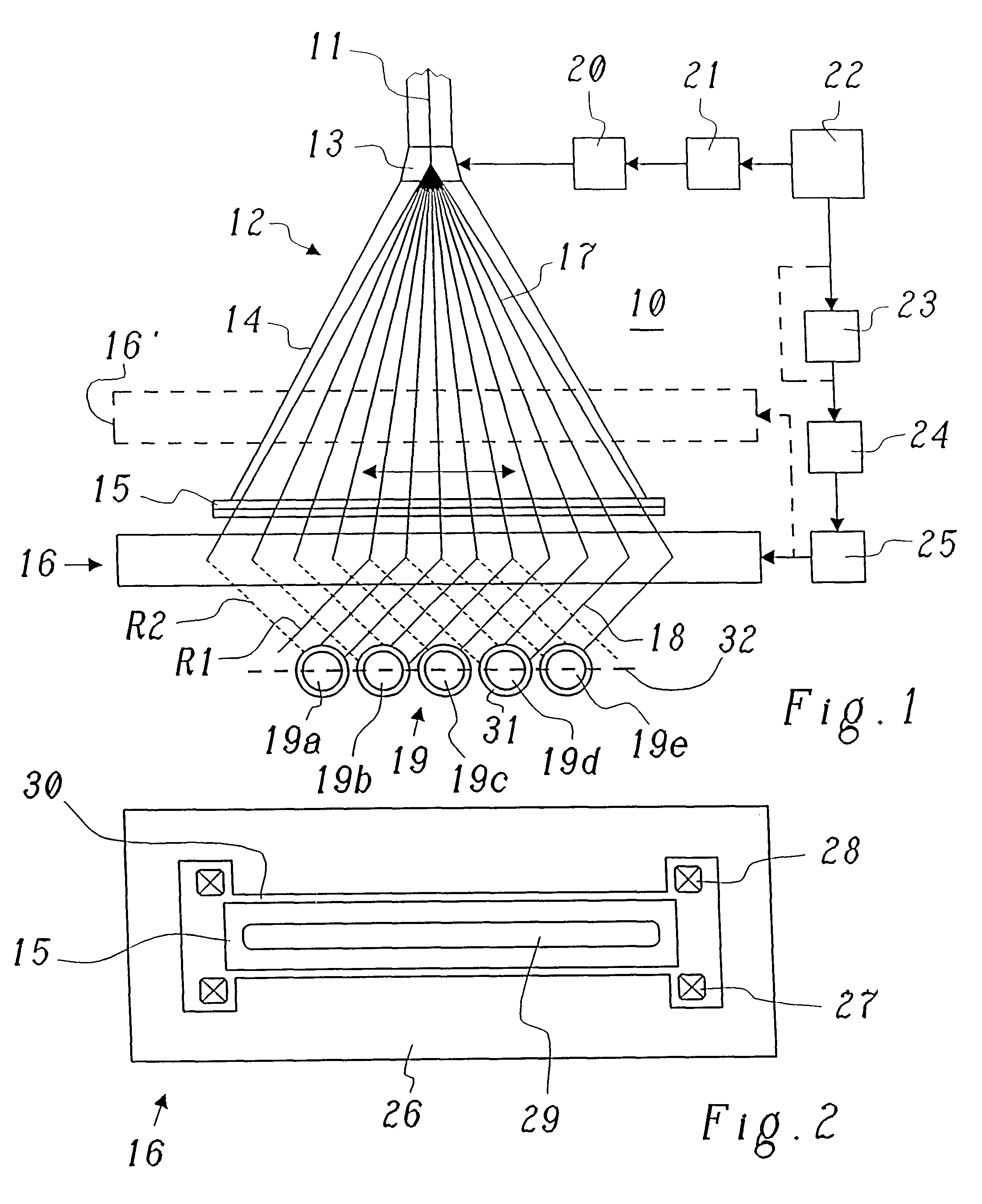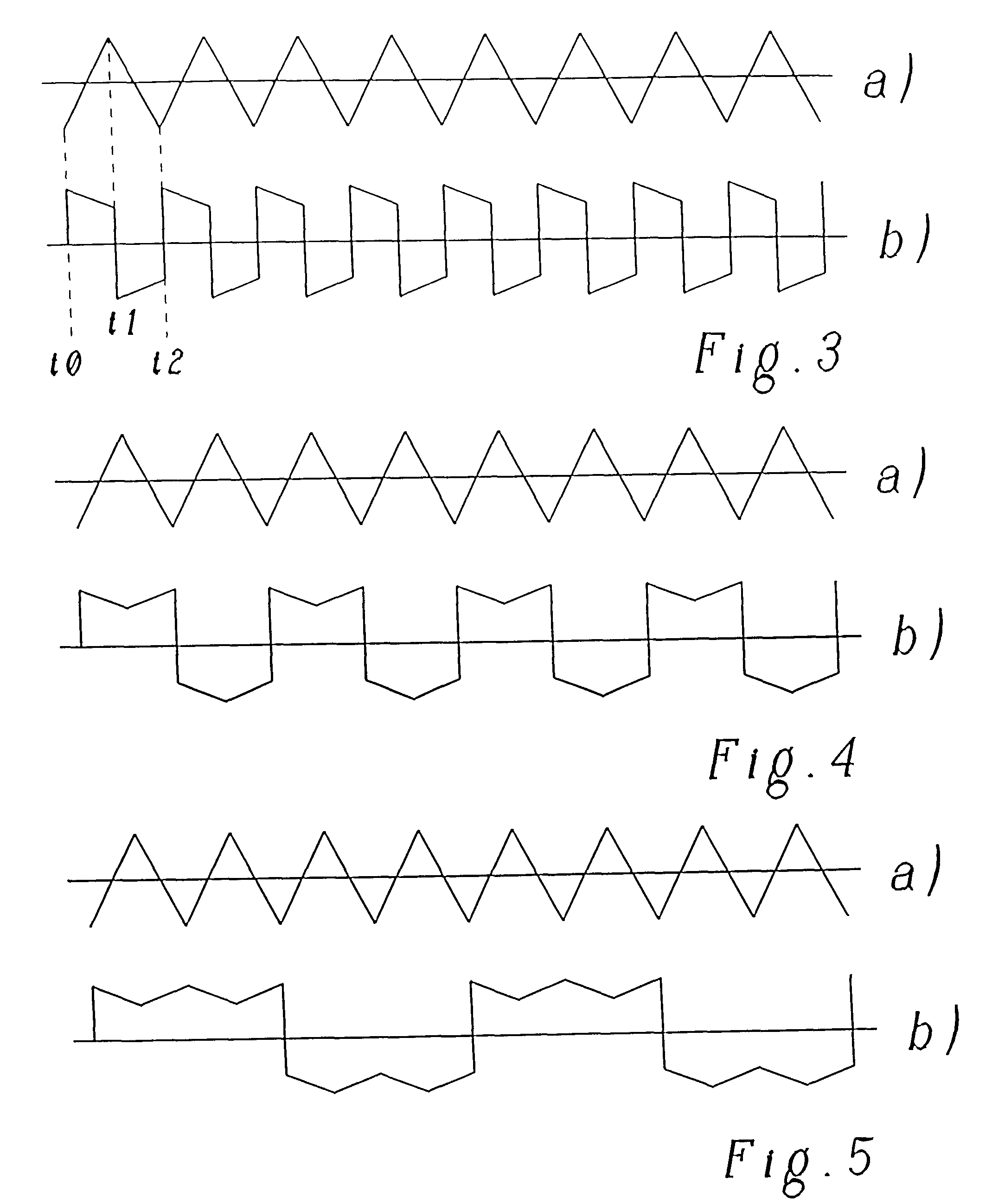Process for the irradiation of strand-shaped irradiated material, and an irradiating device for the performance of the said process
a technology of irradiation device and strand-shaped irradiation material, which is applied in the direction of electrical discharge tube, nuclear engineering, therapy, etc., can solve the problems of requiring special equipment, requiring considerable apparatus expenditure, and not being able to use commercially available standard apparatus consisting of source and scanner
- Summary
- Abstract
- Description
- Claims
- Application Information
AI Technical Summary
Benefits of technology
Problems solved by technology
Method used
Image
Examples
Embodiment Construction
The following values can be assumed by way of example for an irradiation device which can be used in cable production:
Deflection magnet
Low structural height (.ltoreq.100 mm) beneath the scanner 12;
As far as possible, parallel B-field in the deflection range with a clear width of 250 mm (air gap 30);
Magnetic induction B in the range from 0.02 to 0.20 Tesla for 3-MeV electrons at a structural height of the deflection magnet 16 of 100 mm;
Cooling of the deflection magnet for preference with air or water.
Overall, the invention provides a new irradiation process and an irradiation device in which, by means of a dynamic "cross-firing" system, and making use of conventional systems and comparatively low additional expenditure, an efficient and uniform irradiation of strand-shaped irradiation materials is possible in a simple manner.
PUM
 Login to View More
Login to View More Abstract
Description
Claims
Application Information
 Login to View More
Login to View More - R&D
- Intellectual Property
- Life Sciences
- Materials
- Tech Scout
- Unparalleled Data Quality
- Higher Quality Content
- 60% Fewer Hallucinations
Browse by: Latest US Patents, China's latest patents, Technical Efficacy Thesaurus, Application Domain, Technology Topic, Popular Technical Reports.
© 2025 PatSnap. All rights reserved.Legal|Privacy policy|Modern Slavery Act Transparency Statement|Sitemap|About US| Contact US: help@patsnap.com



